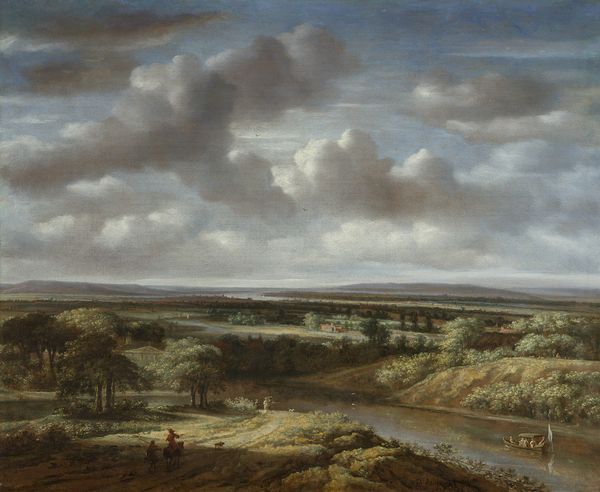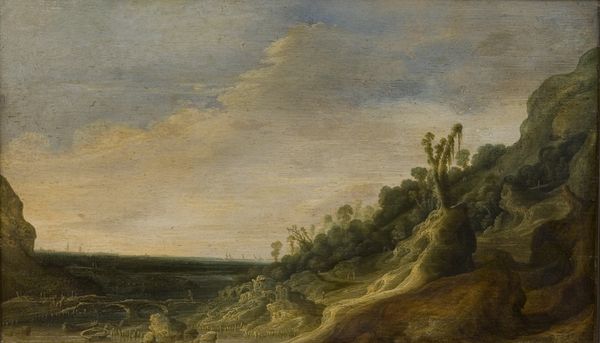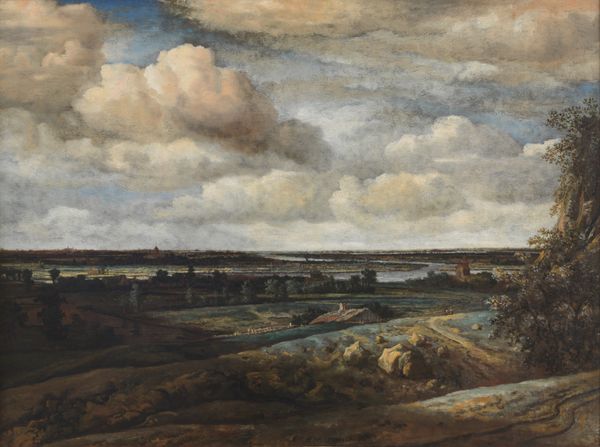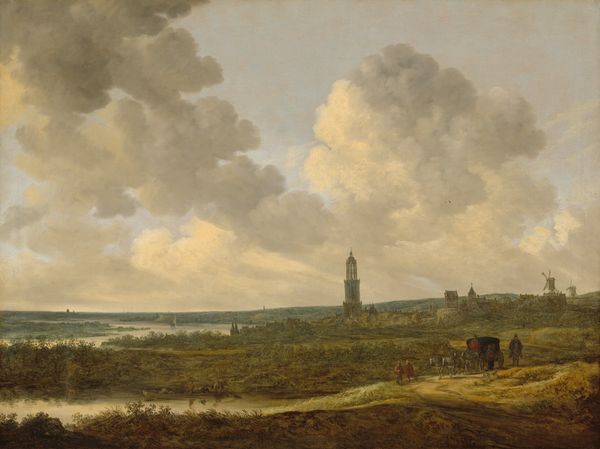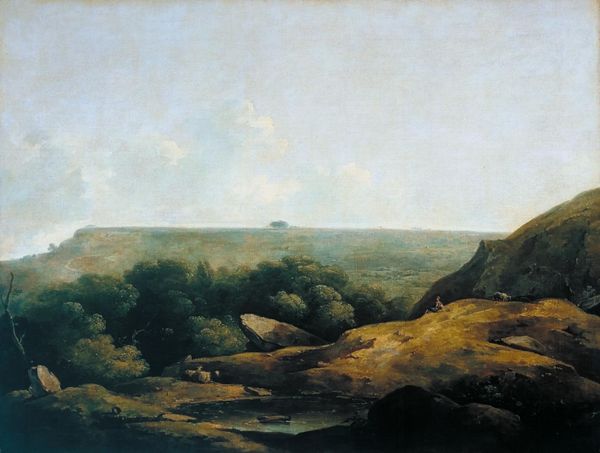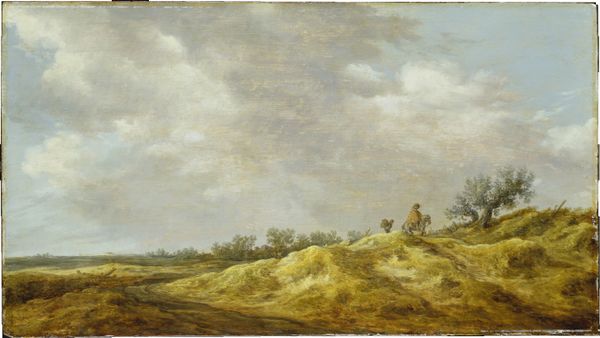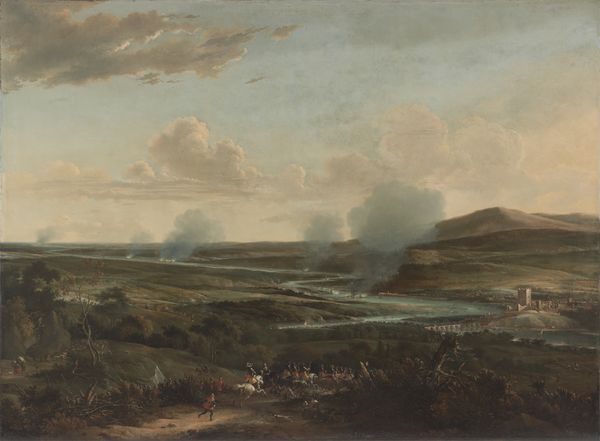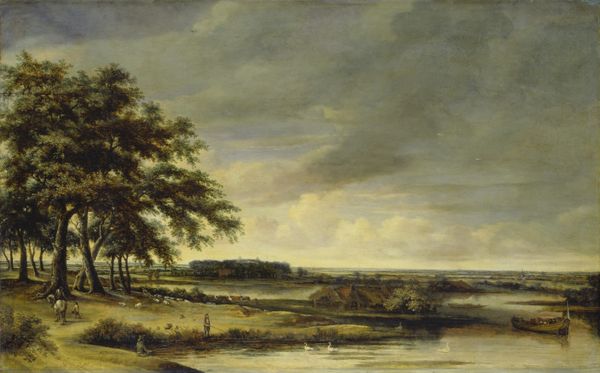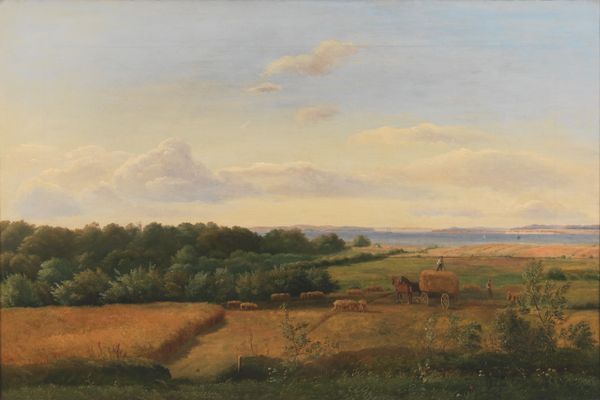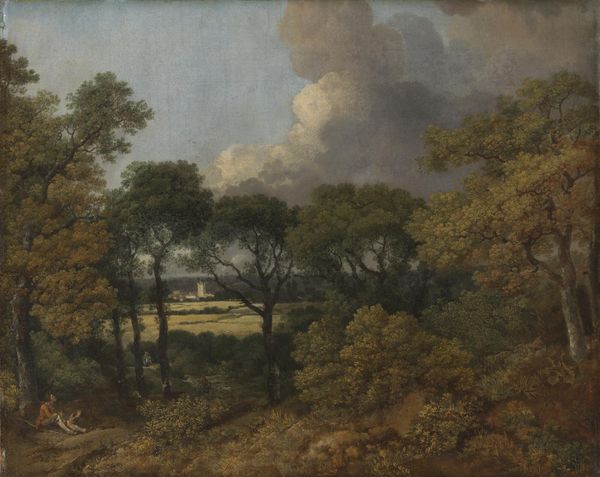![['Panoramic Landscape', 'Panorama in the Countryside Around Kleve'] by Francois van Knibbergen](/_next/image?url=https%3A%2F%2Fd2w8kbdekdi1gv.cloudfront.net%2FeyJidWNrZXQiOiAiYXJ0ZXJhLWltYWdlcy1idWNrZXQiLCAia2V5IjogImFydHdvcmtzLzkyNTEyYTY0LWMzNTYtNDlhZC05NTJkLTQ0ZjlkNjQ5ZDZlNi85MjUxMmE2NC1jMzU2LTQ5YWQtOTUyZC00NGY5ZDY0OWQ2ZTZfZnVsbC5qcGciLCAiZWRpdHMiOiB7InJlc2l6ZSI6IHsid2lkdGgiOiAxOTIwLCAiaGVpZ2h0IjogMTkyMCwgImZpdCI6ICJpbnNpZGUifX19&w=3840&q=75)
['Panoramic Landscape', 'Panorama in the Countryside Around Kleve'] c. 1655 - 1665
0:00
0:00
painting, plein-air, oil-paint
#
baroque
#
dutch-golden-age
#
painting
#
plein-air
#
oil-paint
#
landscape
#
oil painting
#
cityscape
#
realism
Dimensions: support height 97.3 cm, support width 139.5 cm, outer size depth 7.5 cm
Copyright: Rijks Museum: Open Domain
Curator: Here we have François van Knibbergen's "Panoramic Landscape," also known as "Panorama in the Countryside Around Kleve," an oil painting dating back to around 1655-1665. Editor: It’s overwhelmingly...grey. The sheer flatness is punctuated only by that slightly raised plateau in the foreground and some cloud activity up top, a rather moody, overcast affair, wouldn’t you agree? Curator: Yes, and this prevailing atmosphere is precisely what Dutch Golden Age landscape painting sought to capture, going beyond a mere picturesque representation of land. It’s about the sky, the light and, the specific cultural moment that shaped this view of the Dutch countryside following independence. Editor: And how do the town in the distance and that path to the side play into this? Because these elements feel particularly meaningful within that moment in time. The almost religious placement of it feels too considered for chance alone, there must be meaning in where those architectural triumphs meet and puncture the skyline? Curator: Precisely. Consider how the church steeples piercing the sky speak to Dutch civic pride but also to burgeoning Calvinist beliefs during the Dutch Republic. The pathway leading towards them may represent human intervention upon nature but also aspiration, and our constant striving for enlightenment. It invites questions about the rise of urban centers, class structures and evolving ideas surrounding rurality. Editor: So this image doesn't just reflect space and form. The skyline and architecture is carefully constructed to reflect cultural ideology and societal dreams? Curator: Precisely. It uses common artistic symbols as propaganda to cement its place in its unique timeline of social history. Editor: Looking again, there's a remarkable serenity in it despite the impending weather. I appreciate how Knibbergen captured this rather precise emotional atmosphere. Curator: And seeing this piece truly helps to show how a seemingly quiet landscape carries within it so many intersectional voices speaking to questions of power and identity in a transformative epoch. Editor: Thanks to your illuminating historical contexts, this once muted landscape really speaks volumes now. Curator: The pleasure was all mine, to delve into those contextual aspects of this landscape's hidden narratives.
Comments
No comments
Be the first to comment and join the conversation on the ultimate creative platform.

